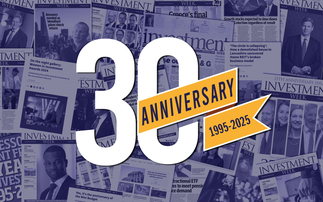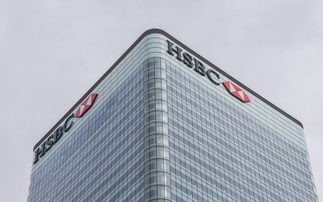Industry Voice: Adrian Gaspar, Multi-Asset Investment Specialist at M&GPrudential Treasury and Investment Office (T&IO), provides some thoughts as to why advisers may look to use active and passive funds in portfolios, either exclusively or alongside each other.
The debate continues to rage in the industry over the relative merits of these approaches to running funds. Within the LF Prudential Risk Managed collectives both are employed, although cost constraints are the main driver for the use of passive vehicles.
Whilst passive funds have gained traction in recent years and rightfully so, many advisers still successfully use active funds either exclusively or in tandem with other investments. It would also be remiss not to say that within many of the Prudential multi asset portfolios, including PruFund, active managers have been an important part of producing strong underlying risk adjusted performance.
The role of Active funds
Exclusively
The bewildering array of investment solutions available to advisers means there are numerous ways of building a portfolio for a client. Ultimately if the portfolio delivers on its objectives and meets the client's aspirations one could argue there is no right or wrong combination of investments products.
Many firms believe they can meet their client's aspirations by exclusively using active funds and have been doing so for several years. The wide variety of fund types within most sectors provides advisers with ample choice and combinations of fund management styles and approaches. If combined sensibly these can not only provide index beating returns but more importantly meet client expectations.
Investment returns may continue to be subdued across some asset classes for some time, so it seems perfectly logical that advisers should seek to find fund managers who are able to generate extra performance for clients in challenging markets through active stock selection.
Core to a portfolio
Where portfolios are not exclusively made up of active funds, they will often have significant core holdings invested in them, blended with passive funds, structured products and possibly ETFs and investment trusts. However, advisers should take into consideration the fact that the time, resource and expertise required to research, understand and be able to blend all these investment types may be prohibitive.
As a specialist play
Many advisers who take a passive approach to investing may still use active funds to invest in specialist asset classes, to fulfil the output from an asset allocation tool, to access a fund manager or simply to adhere to a client request.
Several fund groups have experienced teams to be able to tap in to new and niche opportunities which may not have a passive fund solution, although ETFs do offer a very wide range of asset class and index exposure.
Benefits of active funds
Active funds can underperform their indexes but talented managers who are able to meet and beat their objectives do exist. Advisers recommending active funds will say that good active managers have the skill and flexibility to avoid fads or sectors/countries that are unattractive whilst being able to take advantage of opportunities that they can identify or sell holdings when they feel value has been achieved or maybe is unlikely to be achieved.
Active managers will contend that pricing anomalies do exist, and a simple example is a company entering the FTSE100 which will inflate the share price automatically. Recent times have caused shares in many countries to be sold on fear with no assessment made of company balance sheets forgetting that many have been through a process of strengthening them after the global financial crisis. Volatility in stock markets will always exist and whilst this can provide a bumpy ride for investors it will also provide opportunities to buy companies at very attractive prices.
Finally, many advisers with investment expertise and resource simply feel it is part of their role to add value to their client service proposition through selecting good active managers.
The role of passive funds
Exclusively
A segment of the adviser market often builds client portfolios exclusively from passive funds, with some firms/advisers using ETFs as well. These firms are likely to construct and monitor these solutions via wraps/platforms, particularly if they wish to trade in ETFs. These businesses will generally have taken the view that active fund management does not work and that it is more important that the client is invested in the right combination of asset classes at the right times and at a competitive price.
The benefits to the end investor of this approach are low costs and relatively predictable performance characteristics. The adviser or firm should also save significant amounts of time both initially when constructing a portfolio and at each client review as there won't be as much work involved in monitoring any over or underperformance. There will also be fewer worries around any changes to management, investment processes and other factors likely to trigger a review of a fund's endorsement.
Core to a portfolio
Some advisers will combine active and passive funds within a client's portfolio. They will possibly use the passive funds as a low cost, core holding, providing an opportunity to research and use active managers as 'satellite' holdings.
Another way of combining the two approaches is to predominantly use passive funds to gain exposure to 'efficient' markets and active funds in 'inefficient' markets. This is because there is a belief among some advisers that it is difficult to outperform an 'efficient' market because so much information is available on each stock - and hence reflected in its price - that it is difficult for fund managers to find pricing anomalies and gain a competitive advantage.
There will be a greater perceived opportunity for active managers to use the skill and the resource available to them to find value in 'inefficient' markets or specialist asset classes.
Whilst there is a reasonable spread of index tracking funds, there may not be enough choice to be able to populate a model portfolio for instance, so the use of other vehicles including active funds and possibly ETFs may be appropriate.
Some advisers will not use passive funds to gain exposure to asset classes like corporate bonds and property and there may also be specialist asset classes that are difficult to replicate in passive vehicles.
As a specialist play
Passive funds, particularly ETFs, have increasingly been used by advisers and many fund managers to gain exposure to a geographic area or asset. ETFs can provide very quick, cheap access to specialist areas and are very easy to trade. There are however, potential added counterparty risks to using some ETFs and many niche investments may be unsuitable for most retail investors.
Disadvantages of passive investing
There are disadvantages to passive investing. Most passive funds will marginally underperform their benchmarks; either because of tracking errors or fund fees/expenses. This could be frustrating for some investors when a cursory glance at the financial press reminds them that talented active managers can generate significant returns over and above the same index/benchmark net of charges.
Passive investing is often not the most efficient way to gain exposure to some asset classes - property is a good examples. To accurately track the performance of UK commercial property a tracker would need to own/part own potentially thousands of properties, which clearly is not feasible.
Finally, with passive investing an investor may often end up buying shares in companies at historically high prices, if they enter the FTSE 100 for instance, and be forced to sell the same shares at very low prices if the same company subsequently falls out of the FTSE 100.
Benefits of Passive Funds
Exponents of passive investing will point to several advantages:
Lower cost
Passive/index tracking funds are generally a lot cheaper than active funds, although adviser need to be clear on the 'total expenses' involved in owning passive funds and ETFs
Passive funds will often have a lead fund manager to oversee operations although there is very little human input to any decision making. Hence there is no need for investment committees to make stock, sector or geographic calls and no need for a large team of analyst to provide ideas for the fund manager. This means the overheads for running a passive fund, including trading activity, can be lower and this is usually reflected in the lower annual management charges.
Client perception
The concept of index tracking is relatively straightforward to explain, particularly for an adviser using a fund that 'fully replicates' an index. The client simply needs to understand the characteristics of the relevant indices in the knowledge that the performance of the underlying funds will pretty much mirror them.
It does become slightly more complicated if the adviser needs to explain 'stratified sampling' or 'synthetic' trackers but whatever the vehicle, the concept is generally the same.
Fully diversified exposure to a market where value is difficult to extract due to over research
There is academic research that suggests that it can be difficult for an active manager to beat the index in an 'efficient' market because the amount of data and analysis available on each stock would prevent them from gaining a competitive advantage as the market price always reflects the stock's true value.
Passive funds therefore take one layer of the decision-making process away (i.e. which manager can outperform) which simplifies the investment advice process.
Reduced research requirements
Advisers who use passive funds may argue that even if it was possible for an active manager to beat the market, the amount of due diligence required to find managers who can consistently beat their benchmark is too time consuming.
One could also argue that once a panel of passive funds have been established the ongoing due diligence required for each client review is reduced as well.
Summary
There is a place for active and passive funds in portfolios for any number of reasons. The evolution of both in recent years arguably now means better choice as passive funds offer broader coverage and active managers know they have stiff competition from new low-cost entrants to the market, so need to continue to strive to deliver strong returns but at a more competitive price. This environment should be good for advisers and more importantly their clients.
Learn more about T&IO and Prudential's latest risk managed range.














